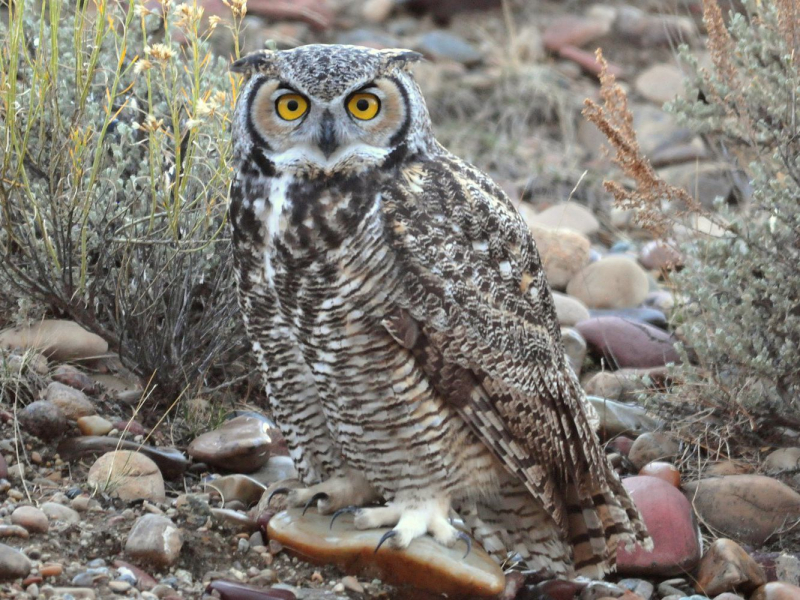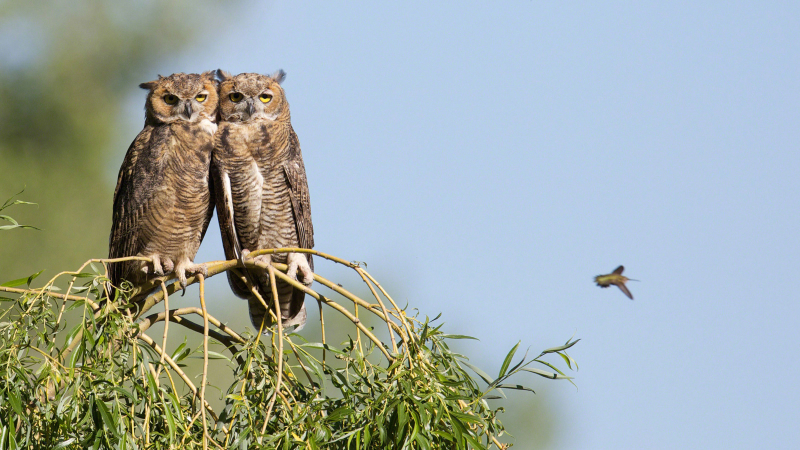Great Horned Owl

All species of owls have a history of attacking humans to protect their young, their partners, or their territories. Innocent joggers and hikers are frequent targets. Attacks by owls seldom result in fatalities, and victims frequently flee without being hurt. Particularly, high-profile assaults on great horned owls (Bubo virginianus) and barred owls (Strix varia) have drawn attention.
A great horned owl reportedly assaulted several people in a park outside Seattle in 2012 after swooping down from the trees. A great-horned owl repeatedly pecked the scalp of a jogger in Salem, Oregon, in 2015 in a similar swooping attack. The victim fled and managed to escape. Strong hunters, and great-horned owls regularly reach lengths of more than two feet (60 cm), with wingspans frequently approaching 200 cm (80 inches). These owls, which can be found all over the Americas, typically hunt on tiny rodents and birds, although they have also been observed stealing larger prey. Their talons can exert a 500 psi-strong grasping force (which is similar to the bite of a large guard dog and thus great enough to permanently disfigure, blind, or kill). Like most owl species, great-horned owls focus their attention on the face and head while engaging larger creatures in combat.











